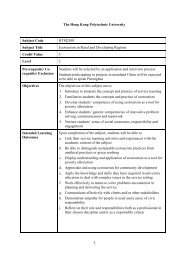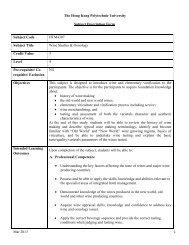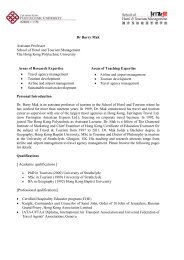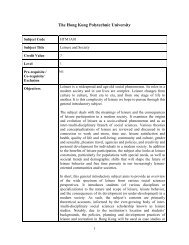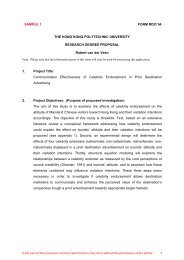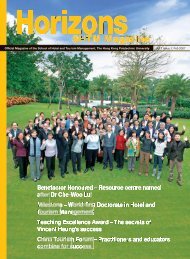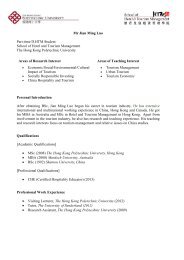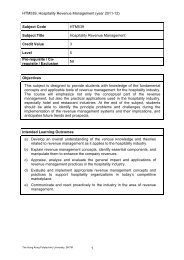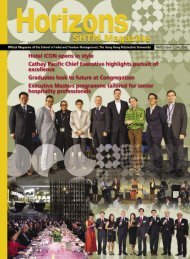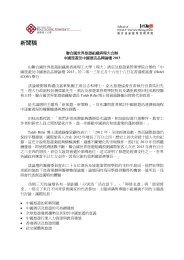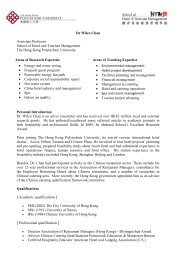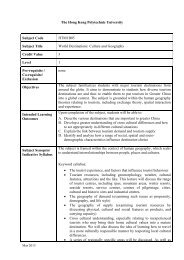Uniquely Branded Hotel ICON Reaches for the Sky - School of Hotel ...
Uniquely Branded Hotel ICON Reaches for the Sky - School of Hotel ...
Uniquely Branded Hotel ICON Reaches for the Sky - School of Hotel ...
Create successful ePaper yourself
Turn your PDF publications into a flip-book with our unique Google optimized e-Paper software.
Volume 4. Issue 2. Sept 2010<br />
Research Horizons<br />
Consider this sequence. If a person were to consider <strong>the</strong><br />
intrapersonal constraint that <strong>the</strong>y might worry about<br />
security on <strong>the</strong> cruise ship but manage to negotiate <strong>the</strong>ir<br />
way around that obstacle, <strong>the</strong>y might stop considering<br />
<strong>the</strong> scenario when <strong>the</strong>y have <strong>the</strong> interpersonal realisation<br />
that <strong>the</strong>y don’t socialise well with strangers. These<br />
considerations, taken toge<strong>the</strong>r, might also be enough<br />
to make <strong>the</strong> person decide against a cruise, even be<strong>for</strong>e<br />
<strong>the</strong>y consider whe<strong>the</strong>r <strong>the</strong>y can overcome <strong>the</strong> structural<br />
constraint <strong>of</strong> actually having enough time to take a<br />
vacation.<br />
This apparent hierarchy <strong>of</strong> constraints should have some<br />
bearing on how marketers approach people who have<br />
never taken a cruise, with more emphasis needed on<br />
addressing what could be described as concerns arising<br />
from a lack <strong>of</strong> knowledge about what a cruise can <strong>of</strong>fer.<br />
From a broader perspective, <strong>the</strong> researchers note that<br />
<strong>the</strong> specific constraints mentioned by <strong>the</strong> interviewees<br />
“shed some light on why only a small portion <strong>of</strong> North<br />
Americans go on a cruise even though most <strong>of</strong> <strong>the</strong>m are<br />
interested in cruising”.<br />
Constraints Can be Overcome<br />
A key point to remember about constraints on any<br />
<strong>for</strong>m <strong>of</strong> tourism is that <strong>the</strong>y can be overcome, although<br />
not always in <strong>the</strong> most obvious ways. Some <strong>of</strong> <strong>the</strong><br />
interviewees, <strong>for</strong> instance, mentioned that “<strong>the</strong>y did not<br />
go on a cruise because <strong>of</strong> a lack <strong>of</strong> a companion”. One<br />
direct remedy <strong>for</strong> this would be to <strong>of</strong>fer incentives <strong>for</strong><br />
potential cruisers to bring along <strong>the</strong>ir friends <strong>of</strong> family.<br />
The researchers also suggest <strong>the</strong> viability <strong>of</strong> redirecting<br />
focus from individuals to “promoting cruise vacations to<br />
organisations, interest clubs, or retirement communities<br />
to generate group travel interest”.<br />
fur<strong>the</strong>r possibility is <strong>the</strong> promotion <strong>of</strong> cruise ships as<br />
venues <strong>for</strong> “conferences, business meetings, celebrations<br />
and weddings”, which would encompass both personal<br />
and business-related constraints.<br />
Ultimately, <strong>the</strong> researchers suggest that promoting<br />
cruises in <strong>the</strong>se ways will help people overcome <strong>the</strong><br />
constraints <strong>the</strong>y currently perceive. It will certainly<br />
give non-cruisers <strong>the</strong> incentive to move past intraand<br />
interpersonal constraints, and focus more on <strong>the</strong><br />
possibilities to be found onboard. The objective should<br />
always be to explore untapped market segments, in both<br />
North America and around <strong>the</strong> world.<br />
Points to Note<br />
■ The cruise industry is growing worldwide but<br />
its potential is yet to be achieved.<br />
■ Intrapersonal, interpersonal and structural<br />
factors constrain potential cruise tourists.<br />
■ In <strong>the</strong> US, non-cruisers are mainly constrained<br />
by intrapersonal and interpersonal factors.<br />
■ Marketers can ei<strong>the</strong>r overcome <strong>the</strong>se<br />
constraints or redirect <strong>the</strong>ir ef<strong>for</strong>ts to explore<br />
new market segments.<br />
Hung, Kam and Petrick, James F. (2009). Developing a<br />
measurement scale <strong>for</strong> constraints to cruising. Annals<br />
<strong>of</strong> Tourism Research, Vol. 37, No. 1, pp. 206-228.<br />
Ano<strong>the</strong>r significant concern was that work responsibilities<br />
reduced <strong>the</strong> likelihood <strong>of</strong> taking a cruise. The researchers<br />
suggest that cruise lines could overcome this by <strong>of</strong>fering<br />
Internet access onboard, allowing those with ongoing<br />
responsibilities to work as <strong>the</strong>y cruise. Again from<br />
an alternative perspective, marketers could promote<br />
cruising to corporations as “a reward <strong>for</strong> employees’<br />
hard work and/or improving <strong>the</strong>ir work efficiency”. A<br />
12<br />
<strong>School</strong> <strong>of</strong> <strong>Hotel</strong> and Tourism Management


